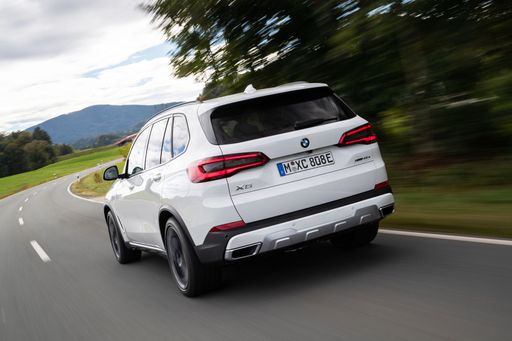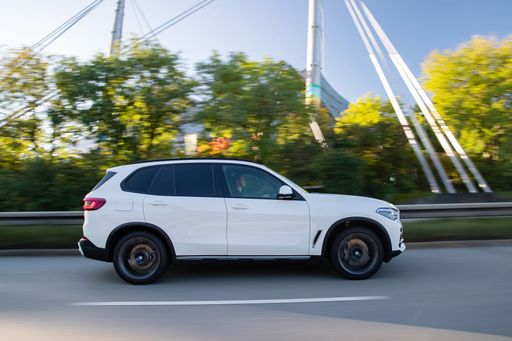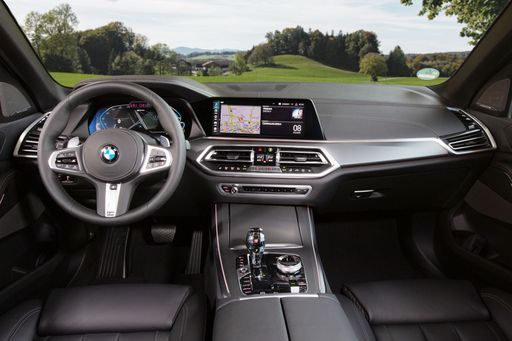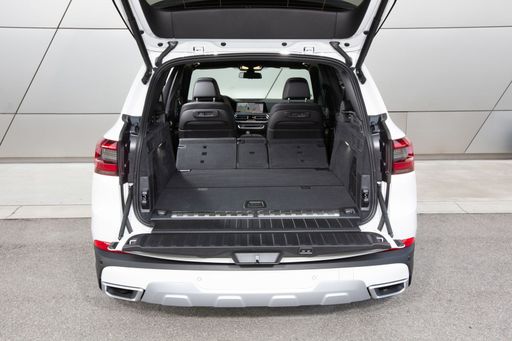Alfa Romeo Junior vs BMW X5 – Which one offers the better deal?
Two cars, one duel: Alfa Romeo Junior meets BMW X5.
Which one wins in performance, efficiency and value for money? Find out now!
Costs and Efficiency:
Looking at overall running costs, both models reveal some interesting differences in everyday economy.
Alfa Romeo Junior has a convincingly advantage in terms of price – it starts at 25700 £, while the BMW X5 costs 77100 £. That’s a price difference of around 51386 £.
Fuel consumption also shows a difference: BMW X5 manages with 0.80 L and is therefore decisively more efficient than the Alfa Romeo Junior with 4.80 L. The difference is about 4 L per 100 km.
As for range, the Alfa Romeo Junior performs convincingly better – achieving up to 410 km, about 305 km more than the BMW X5.
Engine and Performance:
Under the bonnet, it becomes clear which model is tuned for sportiness and which one takes the lead when you hit the accelerator.
When it comes to engine power, the BMW X5 has a clearly edge – offering 625 HP compared to 280 HP. That’s roughly 345 HP more horsepower.
In acceleration from 0 to 100 km/h, the BMW X5 is clearly quicker – completing the sprint in 3.90 s, while the Alfa Romeo Junior takes 5.90 s. That’s about 2 s faster.
In terms of top speed, the BMW X5 performs somewhat better – reaching 250 km/h, while the Alfa Romeo Junior tops out at 206 km/h. The difference is around 44 km/h.
There’s also a difference in torque: BMW X5 pulls convincingly stronger with 750 Nm compared to 345 Nm. That’s about 405 Nm difference.
Space and Everyday Use:
Cabin size, boot volume and payload all play a role in everyday practicality. Here, comfort and flexibility make the difference.
Both vehicles offer seating for 5 people.
In curb weight, Alfa Romeo Junior is significantly lighter – 1380 kg compared to 2240 kg. The difference is around 860 kg.
In terms of boot space, the BMW X5 offers clearly perceptible more room – 650 L compared to 415 L. That’s a difference of about 235 L.
In maximum load capacity, the BMW X5 performs evident better – up to 1870 L, which is about 590 L more than the Alfa Romeo Junior.
When it comes to payload, BMW X5 decisively takes the win – 705 kg compared to 420 kg. That’s a difference of about 285 kg.
Who comes out on top?
Overall, the BMW X5 shows itself to be is largely superior and secures the title of DriveDuel Champion.
It convinces with the more balanced overall package and proves to be the more versatile choice for everyday use.
 @ BMW Group Press
@ BMW Group Press
BMW X5
Alfa Romeo Junior
The Alfa Romeo Junior captures the essence of Italian design with its sleek lines and compact dimensions, making it an icon of elegance and performance. With a spirited driving experience and a charming retro aesthetic, it appeals to enthusiasts and casual drivers alike. This delightful car embodies the brand's rich heritage while remaining a fun and engaging option for those seeking a unique automotive experience.
details @ Alfa Romeo / Stellantis Media
@ Alfa Romeo / Stellantis Media
 @ Alfa Romeo / Stellantis Media
@ Alfa Romeo / Stellantis Media
 @ Alfa Romeo / Stellantis Media
@ Alfa Romeo / Stellantis Media
BMW X5
The BMW X5 embodies a perfect blend of luxury and performance, offering a driving experience that is both dynamic and comfortable. Its elegant design is complemented by a spacious, high-quality interior that prioritises driver and passenger comfort. Advanced technology features ensure that the X5 meets the demands of modern drivers, providing both entertainment and safety on the road.
details @ BMW Group Press
@ BMW Group Press
 @ BMW Group Press
@ BMW Group Press
 @ BMW Group Press
@ BMW Group Press
 @ BMW Group Press
@ BMW Group Press
 @ BMW Group Press
@ BMW Group Press
 @ Alfa Romeo / Stellantis Media
@ Alfa Romeo / Stellantis Media
|
 @ BMW Group Press
@ BMW Group Press
|
|
|
|
Costs and Consumption |
|
|---|---|
|
Price
25700 - 41600 £
|
Price
77100 - 143500 £
|
|
Consumption L/100km
4.8 - 5.4 L
|
Consumption L/100km
0.8 - 12.8 L
|
|
Consumption kWh/100km
15.1 - 17.5 kWh
|
Consumption kWh/100km
-
|
|
Electric Range
344 - 410 km
|
Electric Range
105 km
|
|
Battery Capacity
0.4 - 51 kWh
|
Battery Capacity
25.70 kWh
|
|
co2
0 - 119 g/km
|
co2
19 - 289 g/km
|
|
Fuel tank capacity
44 - 45 L
|
Fuel tank capacity
69 - 83 L
|
Dimensions and Body |
|
|---|---|
|
Body Type
SUV
|
Body Type
SUV
|
|
Seats
5
|
Seats
5
|
|
Doors
5
|
Doors
5
|
|
Curb weight
1380 - 1689 kg
|
Curb weight
2240 - 2495 kg
|
|
Trunk capacity
340 - 415 L
|
Trunk capacity
500 - 650 L
|
|
Length
4173 mm
|
Length
4935 - 4948 mm
|
|
Width
1781 mm
|
Width
2004 - 2015 mm
|
|
Height
1505 - 1538 mm
|
Height
1755 - 1765 mm
|
|
Max trunk capacity
1205 - 1280 L
|
Max trunk capacity
1720 - 1870 L
|
|
Payload
390 - 420 kg
|
Payload
565 - 705 kg
|
Engine and Performance |
|
|---|---|
|
Engine Type
Electric, Petrol MHEV
|
Engine Type
Plugin Hybrid, Petrol MHEV, Diesel MHEV
|
|
Transmission
Automatic
|
Transmission
Automatic
|
|
Transmission Detail
Dual-Clutch Automatic, Reduction Gearbox
|
Transmission Detail
Automatic Gearbox
|
|
Drive Type
Front-Wheel Drive, All-Wheel Drive
|
Drive Type
All-Wheel Drive
|
|
Power HP
136 - 280 HP
|
Power HP
298 - 625 HP
|
|
Acceleration 0-100km/h
5.9 - 9.1 s
|
Acceleration 0-100km/h
3.9 - 6.1 s
|
|
Max Speed
150 - 206 km/h
|
Max Speed
233 - 250 km/h
|
|
Torque
230 - 345 Nm
|
Torque
540 - 750 Nm
|
|
Number of Cylinders
3
|
Number of Cylinders
6 - 8
|
|
Power kW
100 - 207 kW
|
Power kW
219 - 460 kW
|
|
Engine capacity
1199 cm3
|
Engine capacity
2993 - 4395 cm3
|
General |
|
|---|---|
|
Model Year
2024 - 2025
|
Model Year
2023 - 2025
|
|
CO2 Efficiency Class
A, C, D
|
CO2 Efficiency Class
B, G
|
|
Brand
Alfa Romeo
|
Brand
BMW
|
What drive types are available for the Alfa Romeo Junior?
Available configurations include Front-Wheel Drive or All-Wheel Drive.
The prices and data displayed are estimates based on German list prices and may vary by country. This information is not legally binding.
